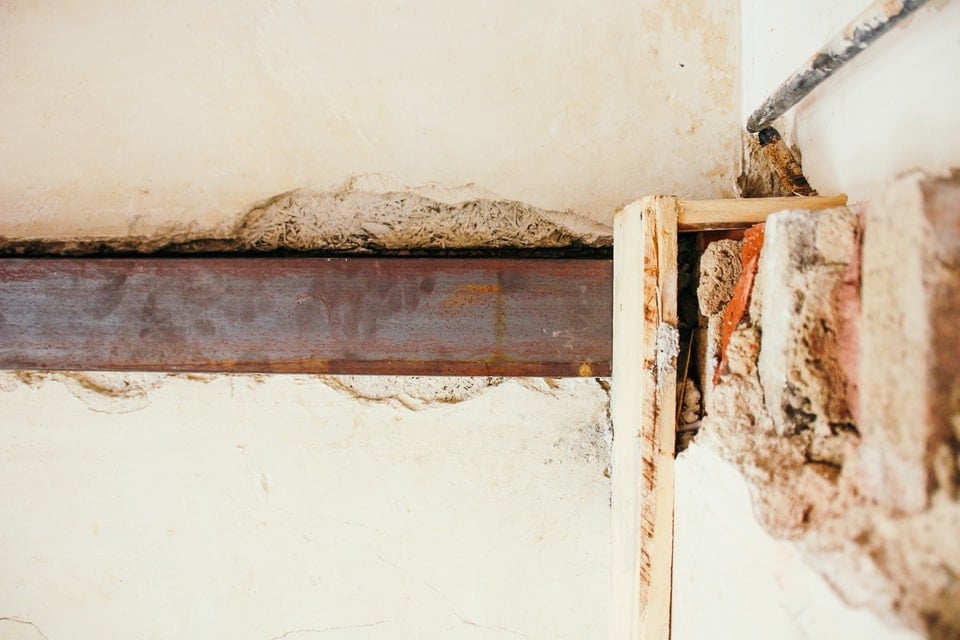In the beginning of my career I worked as an apprentice with a company that installed different types of flooring. At the time, I couldn’t fully appreciate what that experience would mean to me and how useful it would be in my career as an installer. I was able to pick up a lot of important characteristics in the installation techniques of different types of flooring, but regardless of the flooring type there are 5 things you need to know to get started.
In this article we’ll go over the five key factors to insure a successful flooring install. We will also look at who is responsible for the subfloor preparation, how to remediate common issues and what equipment is needed.
Regardless of the flooring type, Here are the five key factors that are a must!
Your subfloor must be:
Flat Subfloor
A flat floor doesn’t mean a perfectly level floor, in fact, it’s nearly impossible for that to be found. The ASTM (American Society for Testing and Materials) requires a commercial subfloor to alter no more than 3/16” over 10’ (ASTM F-710) to be considered flat.
A generally flat subfloor is one devoid of noticeable crowns and depressions. A flat subfloor surface should provide an easy and comfortable under-foot sensation.
.jpg?width=5184&name=brina-blum-Qv0d5LJCxgo-unsplash%20(1).jpg)
Photo by Brina Blum on Unsplash
Clean Subfloor
A clean subfloor is just that, it should be free from any debris, dirt, oily substances, or other loose materials that should otherwise be removed.
Smooth Subfloor
A smooth floor refers to the CSP (concrete surface profile). A CSP of 1 is soft to touch, comparable to the feel of a countertop. The finished results and comfortable under-foot feeling will demonstrate the necessary steps taken to install the new flooring on a well-prepared substrate.
Dry Subfloor
A dry subfloor is one that has been properly tested for RH%, MVER, and pH. You can learn more about how to properly test your subfloor for moisture and what solutions are available for high moisture areas in our blog article How Does Slab Moisture Affect Flooring?. Keep in mind, if you’re on the 20th floor of an existing high rise, moisture will likely not be a problem, but if you are unsure (as with newly poured slabs) it is best to test and avoid a very costly flooring failure.
Structurally Sound
A structurally sound subfloor is one that is devoid of cracking, instability or excessive deflection. A conscientious flooring installer should take time to walk through a space and prescribe the proper preparations needed to ensure a successful installation. The earlier you can have your installation professional walk through your space, be it newly built or rehab, the better.
If you don't have time to read the whole article download this guide to commercial flooring installation to read later.
Who Is Responsible for Certain Subfloor Preparation?
If you think about this in layers like an assembly, one on top of the other with the finished product being at the very top. The structural portion is the responsibility of the owner, general constructor and anyone else who is not involved in the finishing portion. Typically it is the responsibility of the owner to provide the structurally sound subfloor.
Which Flooring Types Are Most and Least Forgiving to Subfloor Prep Issues?
The difference between each of the following flooring types is simply based on the skill level of the installer and the time it takes to get the subfloor ready.
Product ranking from most to least forgiving in regards to subfloor prep:
· Carpet with padding (broadloom)
Carpet With Padding
Carpets with padding such as broadloom, will require the least amount of subfloor preparation.This is because carpet with padding is a stretch-in installation and not glued down.
Basically, all you need to have is a generally flat structurally sound and broom swept subfloor.
Floating Products
When it comes to floating products, you can get away with a basic scrape and sweep. What’s important to consider for a floating floor is that it must be within spec for flatness. In any 10-foot section, if you take a straight edge to the floor it should not deviate more than 3/16”.
The reason is, during installation high/low spots make it more difficult to line-up and lock the planks or tiles together. Moreover, after you put the flooring system to use, you want to avoid the bouncy and visible springboard effect. Flatness is very important.
Glue Down Carpet
Glue down carpet requires a little more effort toward cleanliness. Also, remember to figure in some patching compound to fill-in holes and gaps in concrete.
The surface must also be more thoroughly cleaned to accommodate application of adhesives choices. For example, if you happen to have a small rock or chip of drywall underneath carpet padding chances of someone noticing would be slim.
On the other hand, you don’t want to have a substantial amount of drywall dust or aggregate getting in the glue while installing broadloom carpet. For glue-down carpet, much of the concern is with the under-foot sensation and furniture leveling.
Luxury Vinyl Tile
Expectations to provide and install on a well prepared subfloor are now maximized. Vinyl finishes must be installed on a substrate that is indeed flat, clean, smooth, dry and structurally sound.
This being said, with all the effort it takes to carefully prepare subfloor concrete to receive finished material, modular vinyl is slightly forgiving because if repairs to the substrate are necessary, you would typically only have to remove a few tiles, make the repair and reinstall new tiles into the existing grid.
The resulting appearance would be as intended if tile from the same lot were used. This makes isolated subfloor repairs possible rather than taking-up an entire area to fix a minor problem with the substrate.
Sheet Vinyl
Sheet vinyl requires the most focused and labor intensive effort for excellent quality subfloor preparation. Substrate mistakes and/or oversights with sheet vinyl installations are more noticeable and far more difficult to correct on the backend.
Unlike LVT, you can’t just replace one or two tiles so it’s important to make sure to follow the five key factors. This is where you make sure that the installation team assigned to your project is well-trained and has many successful installations behind them.

Photo by Brina Blum on Unsplas
How Do You Remediate Common Subfloor Prep Issues?
Taking the time to properly prepare your subfloor can insure a successful installation and avoid costly corrections down the road. Correcting subfloor issues usually begins with taking up the existing finish, removing existing adhesive, any loose or spalling layers and starting back the structural level.
A quick fix is not always possible and each situation depends on the sensitivity level of the end user. In some cases, the issue could be located out of view, so the end user may choose to ignore the rather than invest in corrective measures.
One common issue in the industry is not removing old adhesive. Installers will spread a skim coat on the existing adhesive layer(s) and continue to install flooring on top. Sandwiched in that assembly they will create a breaking point and ultimately a weak layer that could start to fail over time, especially as the existing glue crystalizes and breaks down. It’s always best to scrape away existing adhesives down to the concrete and start with fresh and reliable layers to your new assembly.
Another common subfloor issue is the treatment of expansion joints. There are many types of expansion joints and one type that can cause problems if not properly addressed are saw cut control joints. After a slab is poured, the concrete contractor will cut long straight intersecting lines two-thirds of the way through the slab to create a natural weak spot.
Per general spec, a 4" slab should have joints 8-12 feet apart, depending on the design. Control joints are planned weak spots which allow for slab movement and drying shrinkage. When the slab does crack, you have an active role in choosing where it will crack and that it will crack in a straight line below the surface.
Such saw cuts are usually filled with construction dust, debris, nails, screws, you name it. Installers should thoroughly clean-out and fill control-cuts with premium qualified concrete patching materials. Flooring finishes can then be installed directly over top of them.
When done correctly, the lines are never seen again. However, remember the purpose of the control joint… to control cracking and provide a chosen location for slab movement, so there are instances where slab sections shift and a line can slightly telegraph through the finish over time. In other cases, installers do not clean out debris, so patching compound is placed over dust, nails, etc,. Such areas will certainly telegraph sooner rather than later.
Expansion joints and cold joints are two separate slabs that are poured one next to another. The size of the space between the slabs will change due to natural forces as one slab will move independent of the other.
If the installer does not recognize the type of joint then preps and installs over top, the flooring installation will develop a section that will not perform as intended. These types of slab joints need to be preplanned by the contractor to have specific hardware put in place to honor the joint type.
For example, if you’re walking around at a shopping mall you might see linear metal strips with a rubber filler in the middle and flooring installed on either side. The rubber filler strip is what allows the expansion and contraction of the slabs.
What Equipment Do You Typically Bring to Remediate Potential Subfloor Issues?
Depending on the scope of the work, you always want to have a stand-up sanding machine. Typically it would be an 17-inch circular sanding machine that runs 175 RPM. Running this across the subfloor will do the majority of sanding away any contaminants.
It is also recommended to have a 7-inch diamond grinder with a dustless vacuum system in order to do the edges or address excessive high spots. You will also need buckets, mixing tools, various trowels, etc. for spreading patching compounds.
Who Gets the Call When the End-User Discovers Issues with the Subfloor After the Fact?
When there is a serious situation, all parties will end up getting involved. If it gets back to the manufacturer, then the end users are looking for help and they will want to know if this material is not performing the way it should be.
An experienced manufacturer’s rep. will be able discuss the expectations of the product, previous product successes and provide explanations as to why the product is not performing as it should on the project.
Successfully Prepping a Subfloor
If you’re a flooring installer who has only worked with one type of flooring or if you’re new to the world of flooring installations, do your research. If you’re this far into the article, you’re well on your way to ensuring your install is a success.
At Mannington, we understand that making the product is only half of the job. The success of the performance of that product is oftentimes completely dependent on the installer. We take a great deal of pride in educating and training installers around the country so that you don’t have to call in a few months because your floor is failing due to the install.

